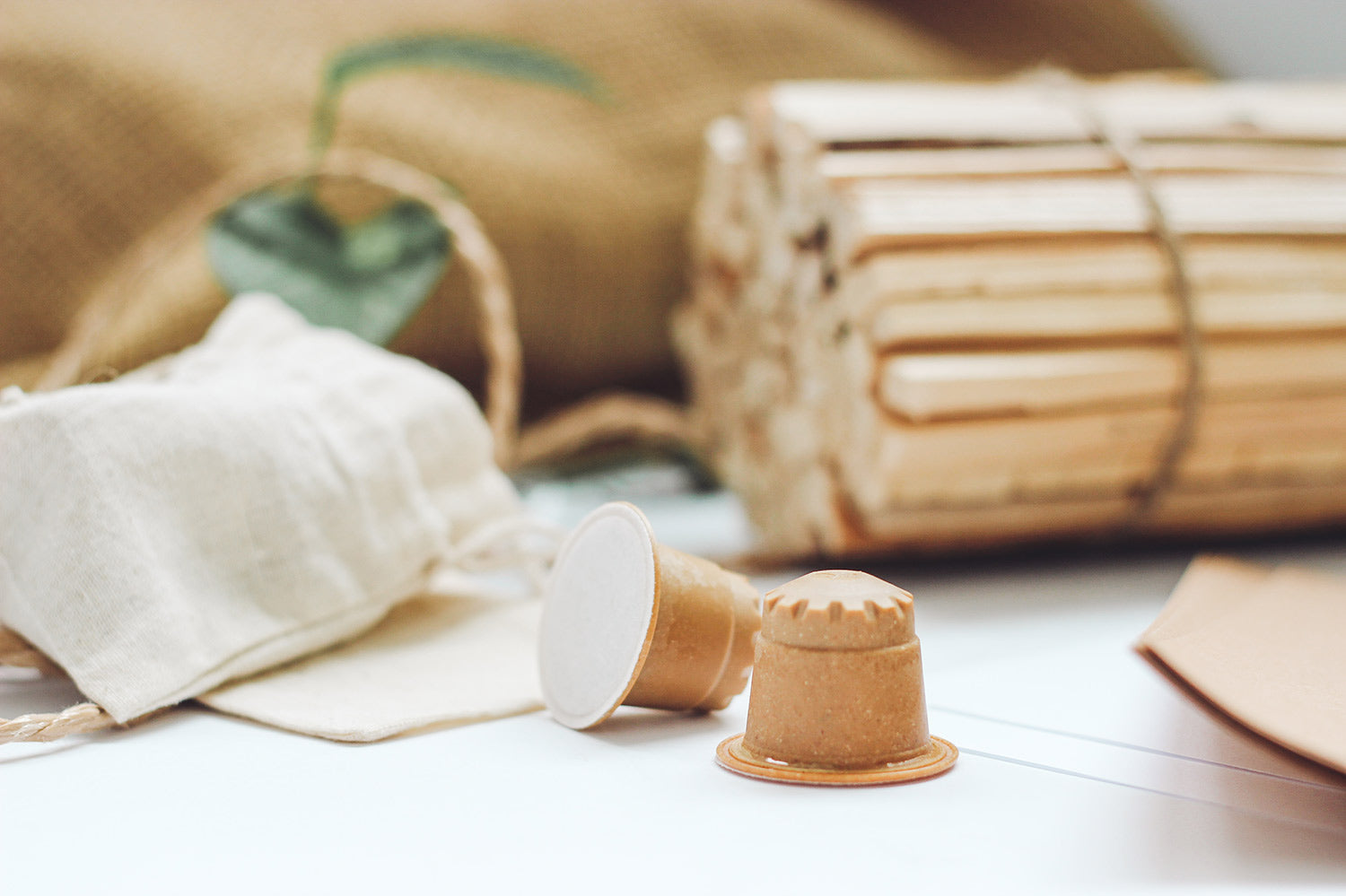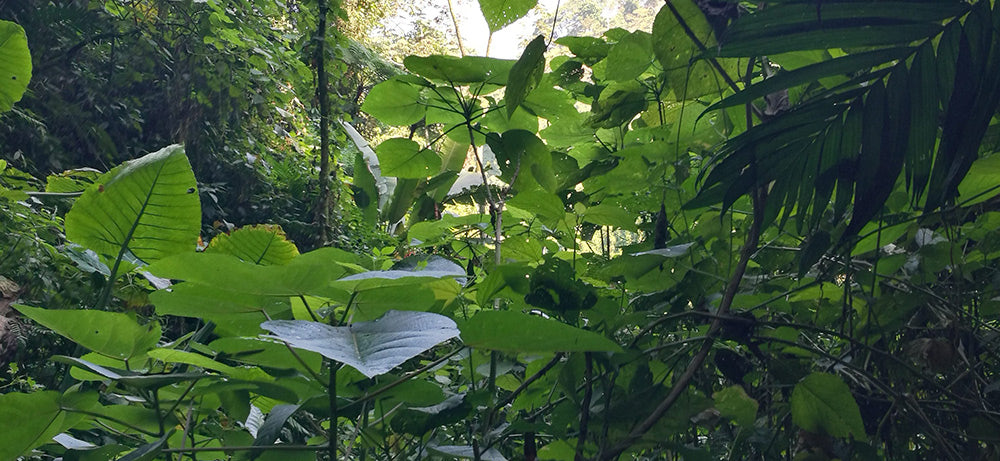
Sustainable New Year's Resolutions
Our best tips for sustainable New Year's resolutions
Many of us make them every year and yet fail to implement them in the long term - the well-known New Year's resolutions. To ensure that this doesn't happen to you in the new year, we have collected our team members' favorite New Year's resolutions. These are so easy to implement that everyone can integrate them into their everyday life and thus maintain a more sustainable lifestyle. The motto of our New Year's resolutions, in keeping with our sustainable coffee capsules, is all about food and drink.
1. Pay attention to the origin of your products & shop more consciously
For food, clothing and furnishings, it has become easier to find out where raw materials come from and where products are manufactured. Most manufacturers now indicate this directly on the product or online in the product description. For food, most supermarkets have information about where it comes from and under what conditions it was grown (organic, Naturland, Demeter seal).
We in the rezemo team therefore try to check where products come from and how they were produced when we buy them privately. We prefer to use regional products or products made in Europe. Many foods, such as avocado, quinoa or ginger, have to travel huge distances. It is therefore important to consume very consciously here. The team agrees - we buy these products rarely and only when we really want them. Then it is essential to pay attention to the conditions under which they were produced for people and the environment. There are also great regional alternatives for many "hip" foods. For example, linseed instead of chia, millet instead of quinoa and German oat milk instead of soy milk. Or you can use regional juices, such as apple, pear or quince from local orchards in returnable glass bottles. They are a great alternative to smoothies made from tropical fruits in plastic packaging.
A second criterion that is always important to us is the packaging of the products we consume every day. This brings us to our second tip.
2. Use more natural materials instead of plastic and thus produce less environmentally harmful waste
In your everyday life, you can also make sure to buy as few products as possible that are packaged in plastic or are made entirely of plastic.
Even though many plastic packagings are now designed to be recycled, they still have a lot of disadvantages for our environment. Firstly, the recycling rates for plastic packaging are still low. Secondly, "downcycling" always takes place. This means that plastics are of lower quality after recycling than new plastics and that they are not infinitely recyclable. In addition, many traditional plastics are made from petroleum. The extraction of this raw material places an enormous burden on our environment and often destroys surrounding ecosystems. Not to mention the creation of microplastics during use and after disposal of the plastic, which has an additional impact on people, animals and the environment.
So to save on plastic packaging when shopping, we think reusable cotton bags for fruit and vegetables are great. You can also use reusable containers for cold cuts and the like from the fresh counter. For example, there are beautiful glass jars with wooden lids that can be sealed airtight. You can also always have a reusable carrier bag with you to avoid disposable bags. For cosmetic products, you can use either reusable glass packaging or solid products (solid shampoo, shower gel, conditioner, soap, etc.).
One of our favorite alternatives to products made entirely from plastic is - how could it be otherwise - wood. But as you know, wood is not automatically sustainable. This means that when it comes to wood products, you should also pay attention to where the wood comes from and how it was processed. Seals such as PEFC , which certify wood from sustainable forestry, can help here. This way you can ensure that the wood does not come from overexploitation and that the forests are preserved as natural ecosystems through sustainable forestry .
3. When it comes to clothing and textiles, pay attention to natural materials and production
Another important point for us is textiles and therefore our clothing. Microplastics, for example, can also enter our environment through textiles made of polyester. Many fashion manufacturers are currently advertising that they make their clothing from recycled plastic bottles, for example. But this is not necessarily better for our environment. Because the fibers are also made of plastic, i.e. fossil plastics. This has the same disadvantages as packaging made of plastic. Physical decomposition, especially during washing, creates dangerous microplastics . This enters our environment via wastewater. Here it affects our ecosystems until it finally ends up in our stomachs via the food chain.
But there are now widely available alternatives made from bio-based and renewable raw materials . You can generally make sure to use natural materials such as organic cotton, animal wool (sheep's wool, cashmere, etc.) or organic linen. Always pay particular attention to ensuring that these are grown under sustainable conditions for animals and ecosystems.
There are also synthetically produced fabrics made from renewable materials. These include, for example, the fiber viscose in the form of the sustainable materials Lycocell, Tencel, Celpur and Modal. These are artificially produced from cellulose. Cellulose is plant fibers, in the case of Lycocell/Tencell, wood fibers. These are made from bamboo, beech, birch, pine, spruce, pine or eucalyptus, for example. Another advantage of viscose is that it can be obtained and processed with very little consumption of resources (water, energy, solvents).
4. Using mindfulness to create more conscious and sustainable consumption
All in all, we can all make our consumption more sustainable if we follow the principles of mindfulness and minimalism. That means living in the here and now and questioning your decisions and actions. Be more attentive to yourself, your environment and other people. What consequences do your actions have for you and others? This also includes thinking about what happens to products when we no longer use them and throw them away. Or to what extent we really need certain things and what positive contribution they make to us. It is essential that you consider how and from what your favorite products are made.
In order to avoid turning your New Year's resolutions into an annoying obligation, we always believe that everything is possible and nothing is necessary. We believe that every step, however small, is a step in the right direction. So, at the beginning, try to start with the things that you can really do without much effort. Once you've gotten used to them and have integrated them into your everyday life, you can take another step and adjust a few more things.
We wish you an energetic and mindful start to the new year with many lasting moments of enjoyment!
Did you like our sustainable New Year's resolutions? Then turn them into reality now and discover the environmentally friendly way to drink coffee!



